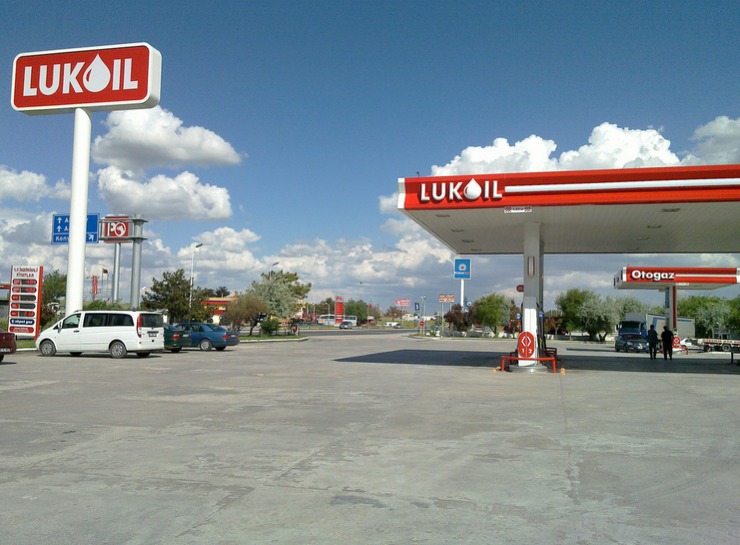The S&P 500 Index (SPX) and Nasdaq Composite (COMP) indices closed the second quarter in the plus column. That’s the sixth straight quarterly gain, a run that investors haven’t seen in more than 14 years.
The U.S. economy contracted at a much steeper pace (-2.9 percent) in the first quarter than an earlier April estimate of -0.1 percent, according to the Commerce Department.
Despite the downward revision, markets were not spooked as various economic variables indicated that the GDP growth has since rebounded. U.S. Federal Reserve Chairwoman Janet Yellen believes that an accommodative monetary policy, rising home and equity prices and the improving global economy may lead to above-trend growth in the US.
Indeed, the housing market seems to be flourishing again. According to a report released by the Commerce Department, new home sales in May increased much more than expected, reaching their highest level since May of 2008 and expanding 18.6% to a seasonally adjusted annual rate of 504,000 versus the market’s expectation of 440,000.
Another indicator that measures the health of the US housing sector is the number of pending contracts to purchase previously owned U.S. homes. This indicator also jumped in May by the most in more than four years. The pending home sales index climbed 6.1% versus the market’s expectation of 1.5 percent, the highest rate since April 2010.
These positive signs seem to indicate that the housing market has been benefitting from a period of low long-term interest rates. That matters because the housing market is an important driver of US consumer confidence and consumption.
So, in my opinion, despite the weather-related dip in the first quarter, I expect the U.S. economy to grow by about 4% in the second quarter. Contrary to the market consensus, I also continue to expect the Fed to raise the rates sooner, perhaps in the first quarter of 2015.
In contrast to the Fed, European Central Bank President Mario Draghi has pledged to keep official rates low until the end of 2016. Furthermore, the deposit rates were reduced to -0.1 percent from zero in an attempt to boost economic growth and avoid deflation, which would increase the real debt burden of regional debt-ridden economies.
Furthermore, the latest ECB stimulus allows lenders to access cheap funding for as long as four years to encourage lending to small- to medium-enterprises. We believe these measures should help the economic recovery in the periphery of Euro Zone and also have positive spillover effects on US companies doing business in Europe.
There was also some good news from emerging markets: China’s manufacturing showed signs that government’s efforts to prevent a slowdown are being effective. The Purchasing Managers’ Index came in at 51.0 up from 50.8 in May, according to the National Bureau of Statistics.
A positive reading of the index is encouraging, since a China slowdown is a major tail risk to global economic recovery.
On the negative side, geopolitical risks have increased. In addition to the crisis in the Ukraine, instability in Iraq and Syria have sent oil prices higher in the last few weeks. Crude Brent price reached levels not seen since September 2013, touching $115 a barrel.
The Islamic State in Iraq and Syria, an extremist group, has seized control of Iraq’s borders with neighboring Syria and Jordan and may even threaten control of Baghdad. However, in my opinion, if the crisis does not spread to the south where the main oil reserves are located, the spike in oil price may be contained in the $110 to $115 per barrel range.
In contrast, if the violence threatens Baghdad or the southern oil reserves, the oil price could spike further by 50% as the largest OPEC producer Saudi Arabia may not be able to compensate for the lost capacity.
So far the global financial markets have not overreacted to the tensions in Iraq as oil analysts regard $120 a barrel as a crucial benchmark for concern. Energy normally does not exceed 10 percent of the consumer price index in most countries. That suggests a 10 percent increase in energy prices will increase inflation by an additional 1 percent.
Core U.S. consumer prices have risen 2% over the last year. If inflation rises much higher because of higher oil prices, it may put pressure on the Fed to consider moving to raise rates quicker.
A further surge of oil prices could also make the global economic recovery more difficult in the second half of the year. Emerging markets such as China, the world’s biggest oil importer, and India’s manufacturing sector are both highly sensitive to rising oil prices.
In June, I did not make any changes to the Long Only Sector Rotation portfolio. As I had hoped, the momentum and growth stocks in our portfolio (3-D printing and Internet stocks) recovered to a large extent. As the geopolitical tensions in Iraq and Ukraine continue, the commodity stocks in our portfolio (oil, gold and silver) recorded gains.
DISCLAIMER: The investments discussed are held in client accounts as of June 30, 2013. These investments may or may not be currently held in client accounts. The reader should not assume that any investments identified were or will be profitable or that any investment recommendations or investment decisions we make in the future will be profitable. Past performance is no guarantee of future results.


